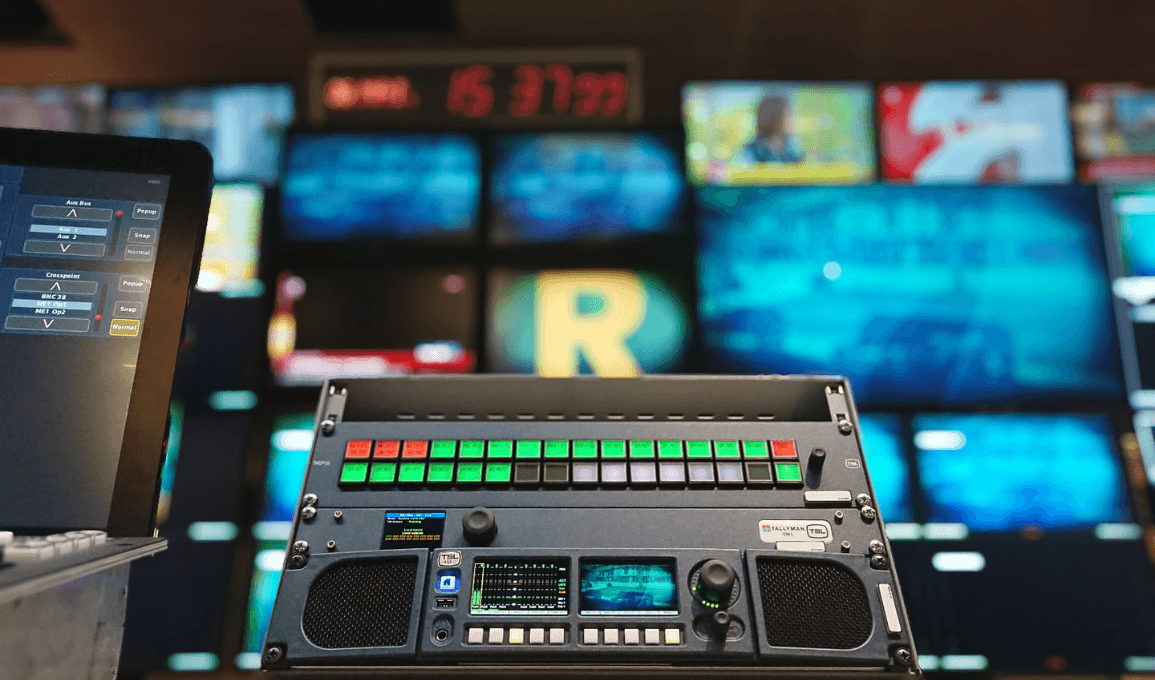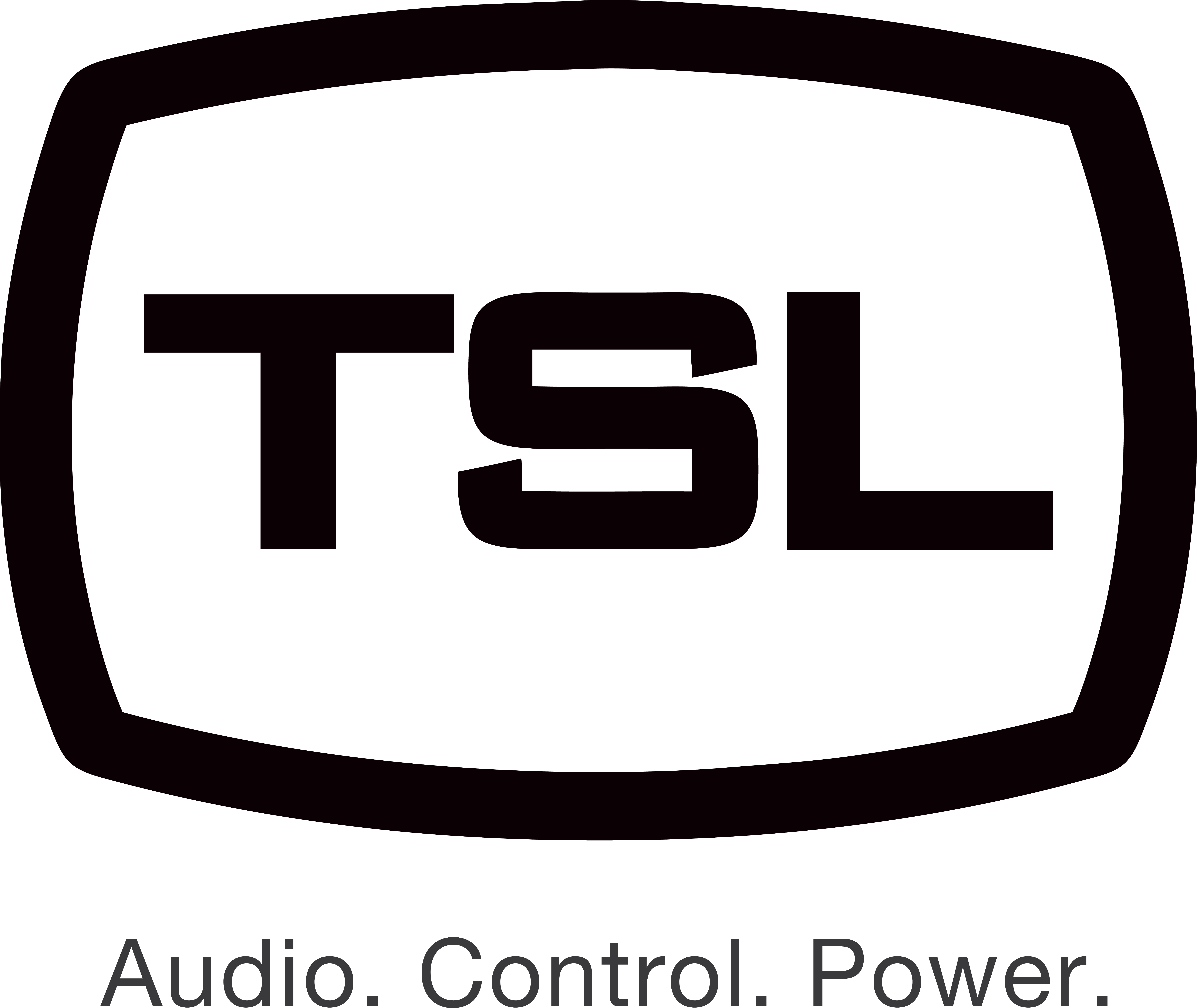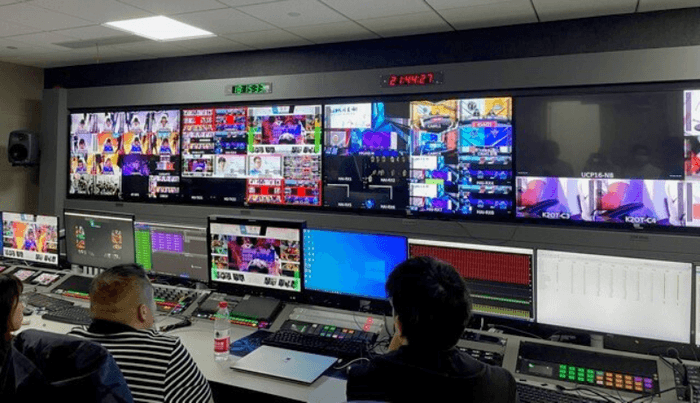Powering Asia’s First Remote Esports Hub: TJ Sports & TSL Control in Action
TJ Sports (a joint venture company, established by Tencent and Riot Games) is the first large-scale eSports remote production centre in Asia and is currently undergoing the second construction phase. They have chosen TSL again to supply its control system. This decision is based on its cooperation with TSL at Phase One, which installed the TSL control system, including TallyMan servers, hard panels, and soft panels. Project IntroductionTJ Sports Broadcast Production Centre is located in Jing’an District, Shanghai, with a total area of 3550 square meters. It includes 5 production studios, 5 control rooms and a few specialised eSports function rooms. The production centre is positioned as the core remote production base, without any localised event production and broadcasting. TJ Sports Broadcast Production Centre offers a one-stop hosting service for such events as LPL, Hero League Mid-Season Championship (MSI), League of Heroes Season Global Final (S10), League of Heroes Mid-Season Cup (MSC), League of Heroes All-Star Game, DeMarcia Cup, Genting Electric Competition, TOC domestic events, TFT international events and other games. |
Background
With more teams, venues and cities involved, and more overseas competitions and international direct broadcast demand for electric competitions, TJ Sports Cultural Development (Shanghai) needs the most advanced centralised control system to carry out more high-quality simultaneous multi-venue telecast production and continuously improve production quality.
TJ Sports Broadcast Production Centre has its unique concerns, not only due to multiple studios and multi-control rooms in the production island cluster, but also because it needs to carry out simultaneous broadcasting of multiple eSports. Therefore, the flexibility of resource allocation and access control appears among the top priorities in product selection.
After careful investigation, TJ Sports decided to choose TSL’s centralised control system because it has obvious advantages in solving the flexible distribution and centralised management/control of resources such as multi-brand core AV, multi-screen, and Tally while matching the remote production of off-site network control
“We have conducted a detailed assessment of the above key technical and product functional implementation, and have chosen TSL. Still, what attracts us most about TSL is its price-to-performance ratio. While a whole package from other brands costs millions of dollars, TSL can be secured at less than a million.”– Zhang Xuming, Head of Broadcasting Technology Planning, TJ Sport
Challenges
Compared with other sports, eSports broadcasting is unique as it is divided into two arenas, one in the real event venue and the other in a virtual gaming server. Electric competitions use not only live shooting cameras like in traditional sports but also OB servers for shooting virtual arenas. Operated by the game director (Observer), it takes “shots” of an in-game arena and even playback slow-motions of killing moments. The director and program director of the eSports event need to control the dynamics and pictures in both arenas at the same time in the broadcast.
ESports broadcasting has to capture lots of PC signals used as core signals for eSports broadcasting. eSports broadcasting’s biggest difference from traditional sports broadcasting is that the number of production signals are huge, and among them, a lot of signal sources do not exist in traditional sports.
For example, at the S10 Finals, the video source for one single event broadcast reached nearly 80 signals while the audio signal source totalled 128 channels. Combined with field feeds of backhaul video, audio, and the overlay of local video and audio signals, the number of eSports signals is huge.
“In the whole implementation process there generates a lot of temporary signal scheduling. To achieve a team swapping setup, several modes of pre-set are completed in advance. Ahead of each game, just follow the schedule and press one key to switch to the expected preset mode. It only takes a second or even less. Thus, the smooth running of the entire event is ensured. This preset, if not implemented, can result in actual rule changes in many departments. After preset is realised, the live broadcast is optimised, so are other workflows, such as on-site event management.”– Zhang Xuming, Head of Broadcasting Technology Planning, TJ Sport
In a few words, TSL centralised control system successfully accomplishes the management of large-scale video switchers, AV matrix, and even larger audio mixers. It enables technicians to overcome the challenge of planning and scheduling larger-scale signal sources, as well as resource allocation and centralised management for multi-project remote production. The centralisation and humanisation character of TSL control system has also become the underlying element of system management.
“TSL is always ready to listen to us and make timely responses with product adjustments and program design customized to our needs. We exchange ideas and brainstorm together. Through discussion, we figure out some fantastic ideas combining each other’s strength. Finally, we come up with a sophisticated technical solution.”– Zhang Xuming, Head of Broadcasting Technology Planning, TJ Sport
Solution
TSL’s control solution plays the important role of centralised control in the TJ Sports Broadcast Production Centre. It fully meets the needs of the production centre, and has successfully accomplished off-site control of remote network production in major international events.
The systems:
- Hosts centralised scheduling and control of the overall signal in the entire studio complex, including 5 studios, 5 control rooms, and the core server room.
- Carries out the centralised Tally management of studios and control rooms by flexible matching and resource allocation.
- Handles some personalised items throughout the broadcast process, especially the signal scheduling pre-set, which helps operators reduce operating time while making the operation very variable.
“The TSL centralised control system enables the production centre to organise the entries according to individual conditions. If it’s not sorted out, it’s very painful for technicians to deal with it later. If you are doing a local event and need to switch venues, it usually takes about a week or so.” – Zhang Xuming, Head of Broadcasting Technology Planning, TJ Sport
He added, “TSL enables us to carry more events that are more intensive and more complex. It does so through a certain amount of advanced setup. It actually reduces risk at the execution phase while improving the humanised operating process. If it takes 10 steps to do one thing, for instance, I can set these 10 steps in advance in the system and save them into a key. For the operator, you just press the key and everything is done, at the click of a button. But behind the scenes, all 10 steps are executed.”
Remote production of eSports has become increasingly important. With the help of TSL, TJ Sports did an excellent job of remotely producing the League of Heroes Mid-Season Cup (MSC) through innovative means and efficient team collaboration.
The competition attracted eight professional teams from the Chinese LPL and South Korea’s LCK. It was the world’s first remote production event to be broadcast in venues across different countries.
“In a stable production centre, TSL is able to hide the complexity of the underlying system so that operators can always focus on producing great content, implementing ways or programming patterns beyond imagination in the past.” – Zhang Xuming, Head of Broadcasting Technology Planning, TJ Sport
Using Soft Panels
In addition, the TSL soft panel provides a complete software control interface with an intuitive editor that allows for multi-page configuration, making it easy to access, configure, and edit.
“TSL’s PC-based soft panel intelligently draws a two-story floor-based floor plan across the entire production centre. This graphical interface allows it to be operated by many people who don’t know much about the entire system, and somehow lowers the threshold for its operators. After all, senior personnel are limited in every company. The TSL system has been really stable. It’s been running for two years, and so far I haven’t had any problem with TSL equipment.” – Zhang Xuming, Head of Broadcasting Technology Planning, TJ Sport
Phase II
“TJ Sports Broadcast Production Centre is now undergoing the second phase of construction, and we’re sticking to TSL. TJ Sports Broadcast Production Centre Phase II will abandon the traditional baseband infrastructure by getting rid of the concept of studio and control room clusters. Instead, it will implement an IP-based production island cluster, connecting via ST2110 signal delivery. We’ll see what TSL is capable of managing thousands by thousands of AV matrices. We’re going to give full play of the innovative spirit of eSports and work with TSL to pioneer this world-leading cluster.” – Zhang Xuming, Head of Broadcasting Technology Planning, TJ Sport
Have a Question?
Book a call with our technical team.
Related Case Studies
Our Solutions

Audio Monitoring
Listen, measure, control and troubleshoot with award-winning AMUs

Control Solutions
Flexible, modular vendor agnostic applications and interfaces for control, orchestration, automation, monitoring and disaster recovery

Power Management
Intelligent PDU solutions with remote control and monitoring
Our Commitment to Excellence
With an impressive history of industry awards and a dedication to pushing the boundaries of what's possible, TSL stands as a beacon of innovation. Our installed user base and repeat customers are testaments to our leadership in developing solutions that meet and exceed our clients' expectations worldwide.
Join us as we continue to listen to, enable, and empower professionals across the globe with superior technology that anticipates the future needs of their industry.



